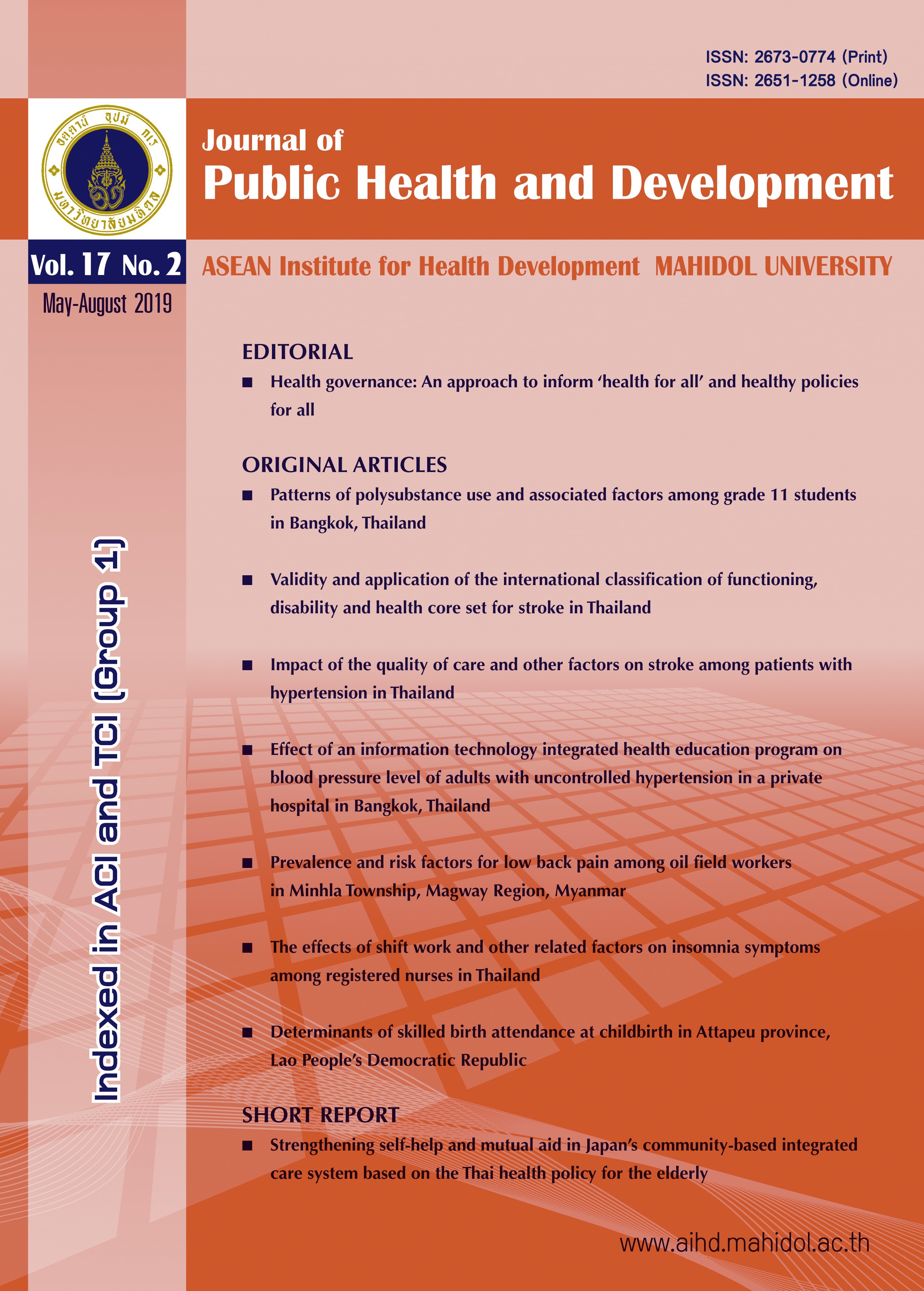The Determinants of skilled birth attendance at childbirth in Attapeu province, Lao People’s Democratic Republic A cross-sectional study
Main Article Content
Abstract
The Lao People’s Democratic of Republic (Lao PDR) is facing challenges of high rates of maternal mortality and neonatal mortality. Increasing the attendance of a skilled birth attendant (SBA) at childbirth is expected to be a key intervention to reduce mortality. The possible determinants of an SBA delivery at childbirth in the Lao PDR were explored. A cross-sectional study was conducted among 393 women who gave birth within the past two years in six villages in Attapeu province, The Lao PDR. To examine the association between the delivery with an SBA and its potential determinants, multiple logistic regression analysis was conducted using SAS 9.3.
The results indicated that 47.9% of the deliveries among 374 participants utilized SBAs. Multiple logistic regression analysis showed villages far from a health center (HC) (OR=0.35, 95% CI=0.19–0.64), lack of transportation (OR=0.13, 95% CI=0.06–0.25) and lack of knowledge about the Free Maternal and Child Health (MCH) policy (OR=0.52, 95% CI=0.28–0.98) were significantly associated with a non-SBA delivery. The odds ratio of an SBA delivery was over three times higher among those who received antenatal care (ANC) more than 4 times (OR=3.72, 95% CI=1.40–10.95) than those who never received ANC.
To formulate an effective intervention strategy, the following three points should be considered:
community-based activities to secure transportation; promotion of HC utilization for easier access to SBA deliveries and dissemination of the Free MCH policy.


